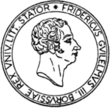The mechanical calculator for all four arithmetical operations by Anton Braun (1727)
Anton Braun from Moehringen (upper Danube valley, Germany) was mathematician and optician of the Viennese imperial court of Charles VI. In 1727 he applied for the post as imperial instrument maker, presented the emperor with this magnificent artifact – and got the job. His mechanical calculator became part of the imperial cabinet of curiosities and treasures and was subsequently presented as a fascinating mechanical wonder. The possibility to mechanically realize all four arithmetical operations was still extremely unusual at the time and so Braun’s calculator was able to awe the emperor as well as his guests.
Its basic functionality only slightly differed from the mechanical calculator the Italian Giovanni Poleni had already developed in 1709 in Padua and it actually struggled with the ten’s carries in a similar way, yet the machine made by Braun was so much more impressive. This is partly due to its exterior design:
The German Johann Baptist Straub (1704-1784), who later in life worked as a renowned Rokoko sculptor in Munich, was able to earn some recognition as a young artist by designing the artful stands and the engravings on the cover of the machine. The ease and playfulness of that decor was unique and set a trend: leading the way from mere ornamental adornment to a truly creative and individual process.
Between 2000 and 2001 Ullrich Wolff and Ingo Laubach of the Arithmeum together with staff of a trainee program of Kloeckner-Moeller, a German switchgear producer, created an exact replica of Braun’s original calculator, which is part of the collection of the art-history museum in Vienna, Austria (Kunsthistorisches Museum Wien). The engravings of our replica were realized by master engraver Manfred Burkert.






